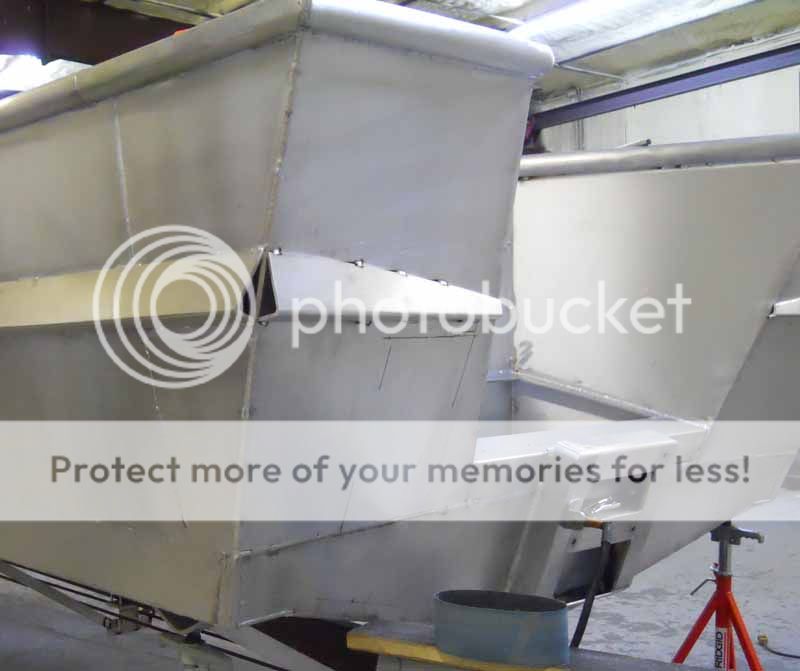A typical planing skiff has about 1/3 of the LOA in the bow's taper or curve of the topsides, and about 2/3's LOA aft that, some boats' sides are dead straight and flat, others are more curved in the after 2/3's LOA but regardless of the topsides; this extrusion will help keep the sides clean and fair. When welded to the topsides it forms a hollow box beam, one or two of these will really make a welded boat's sides stiff!
But... it gets used in a homely manner too many times. This post is a rant about not tapering the hull stiffener! I show what the difference in looks could be, and you've seen lots of builders that only put some chopped end block on the hull stiffener and let it go. So if you're having a boat built, building or remodeling your own, here's a design element to consider- maybe your builder will agree that hull stiffener could look better than it would if left "whole''?

Above is a small block of the extrusion to make sure I'm being clear on what this post is about? the left most extrusion is the hole shape wrapped around the topsides without any taper.
The middle example is tapered on the two legs and the right hand is shown with long curved V taken out of the back so the taper can happen in width as well as depth.

Just a view from above the three pieces so the taper is clear, and the perspective allows all pieces to be seen in proportion a little better.
The work to tape is simple, start to finish 20 minutes with a batten some vice grips to layout the curves and then skill saw or jig saw, Vixen file the edge and if the extrusion is continuous welded? then a little bevel on the edge of the tapered legs will allow a nice small weld to go into the V formed by beveling the leg edges to the hull's topsides.
The same goes for the taper of the width. This V is laid out using a flat bar batten and can be skill or jig saw cut, then flap sanded inside to bevel, drill a hole at the after end of the cut to stop crack out... pull the sides closed holding the surface flat using BowLegged vice grips and little pieces of flat bar, tack and the weld out, I'd sand that surface flat and even take the 3M pads to buff it out. Then the taper of the depth combined wih the taper of the width, would all the Hull Stiffener to be wrapped farther forward and would be more flexible to put on.
Looking recently at a nice looking skiff, not sure the link here? and noticed that the hull stiffeners stand out too much at the forward ends, they spoil a fine looking skiff's appearance in my eye, but that doesn't have to be the case... its not much work to taper one or both directions allowing this great looking extrusion to fit more cleanly into your sheer line and topsides of a skiff or larger hull.
Cheers,
Kevin Morin
Kenai, AK





